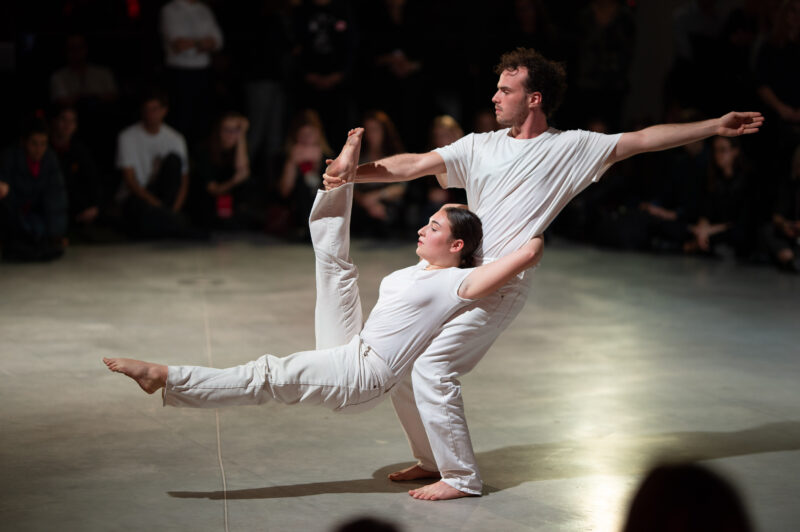LIZA BALIASNAJA

“Figures”. Photo from MO museum archive
Lithuanian-born dancer, choreographer and educator Liza Baliasnaja (b. 1994) currently lives in Brussels, Belgium. Baliasnaja started her professional career in the troupe of Kaunas Dance Theater Aura. She studied dance and choreography at the ArtEZ Academy of Theatre and Dance in the Netherlands and the P.A.R.T.S School for contemporary dance in Belgium. Baliasnaja is currently studying Philosophy at KU Leuven University in Belgium.
Since graduating from dance studies in 2016, Baliasnaja has been holding seminars and lectures for young dance students, amateurs and dance professionals in Lithuania, and is a visiting lecturer at the Lithuanian Academy of Music and Theatre. As a performer, she has worked with such choreographers as Mårten Spångberg (Sweden), Ula Sickle (Canada/Poland/Belgium), Eszter Salamon (Hungary/France/Germany), DD Dorvillier (USA/France) and Lenio Kaklea (Greece/France). She has performed on stages of various international festivals such as Tanz im August, ImpulsTanz, Wiener Festwochen, held residencies in Estonia, Belgium, Israel, South Korea and France, and worked as an assistant to choreographer Eszter Salamon.
In her own artistic practice, Baliasnaja combines questions of art theory and philosophy with dance research methodologies. Her performances Commensurate to be with and Figūros (Figures) (both 2018) are shown in both dance and visual arts spaces in Lithuania and abroad.
Figures is a duet of Baliasnaja and British dancer and musician Sidney Barnes, based on the so-called gestalt shift. This phenomenon has to do with our ability to see some two-dimensional figures in two ways (e.g., when a hare’s head turns into a duck’s head and a princess into an old woman). Some minds can change one image into another quickly, while others only gradually. This phenomenon is not an objective reality in itself, it is given meaning by humans themselves. Perception depends on both objective and subjective factors. In the performance, the creators explore what happens during that “switching”, how the visual, intellectual and even emotional experience of the observer changes. And if experienced multiple times, it can lead to introspective thinking, to observe how the outside changes the inside. The figures invite the viewer to focus on a personal choreography of thoughts, stimulated by the physical landscapes created by the performers.
liza.balias1994@gmail.com lizabaliasnaja.tumblr.com